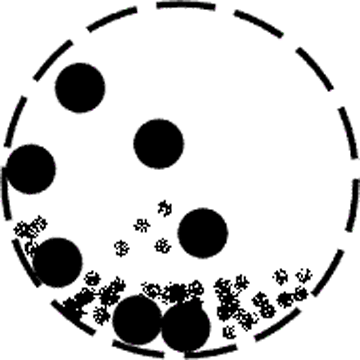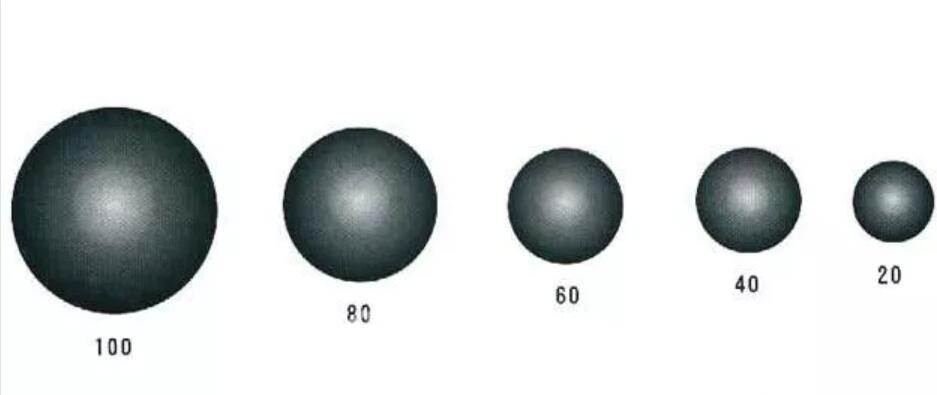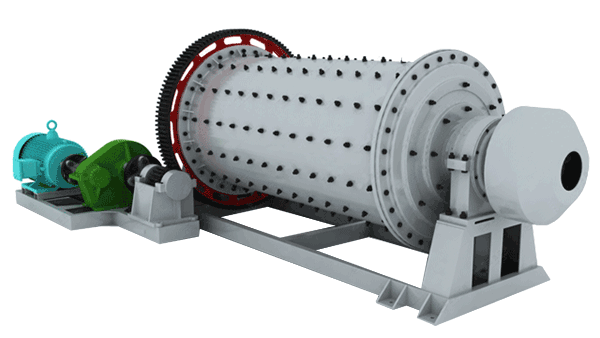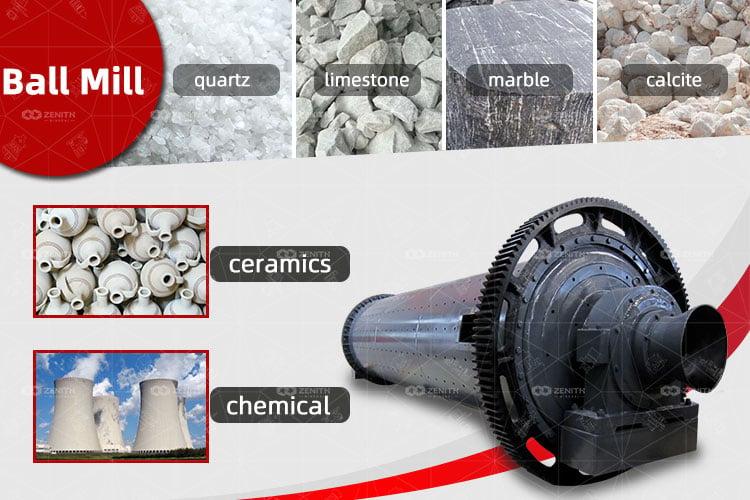Before purchasing the ball mill, we need to know the model, output and structure of the ball mill. Before the ball mill is put into operation, we need to know how to load the ball, how to mix the media, and how to improve the output during use. Where can I find answers to so many questions? Today, we have summarized 33 common questions about ball mill and share them with you.

According to the different media of the mill, it is divided into: if the media is steel ball, it is called ball mill; If the medium is steel rod, it is called rod mill; If the medium is gravel, it is called gravel mill; It is called autogenous mill with its own ore as the medium. An appropriate amount of steel ball is added to the autogenous mill to form the so-called semi autogenous mill.
According to the shell shape and ore discharge method: the ball mill is divided into short cylindrical, tubular and conical overflow ore discharge and lattice ore discharge, the rod mill is divided into cylindrical overflow ore discharge and open low-level ore discharge, and the self mill or semi self mill is mainly short cylindrical.
The expression method is: diameter × Length, denoted by D × 50. Such as 2700 × 2100mm ball mill, its diameter is 2700mm and its length is 2100mm.
There are two types of ball mills commonly used in the concentrator: grid type and overflow type. The difference between them is that there is no fan-shaped grid plate device in the overflow type ore discharge part. The slurry of overflow type ball mill is automatically discharged through the ore discharge port, while the grid type has the function of forced ore discharge due to the installation of grid plate, so as to increase the processing capacity and reduce ore over crushing.
The fineness of grinding products is usually sieved by the 200 mesh sieve of the standard sieve and expressed as the percentage of the sieving amount in the total product (mesh is the number of sieve holes in each inch of screen layer and is used to name the sieve).
utilization factor is the average raw ore volume that can be processed per cubic meter of mill effective volume per unit time, expressed in tons / M3 When expressed. That is, the mill utilization factor Q = q / V (ton / M3· Time).
Unit hour production capacity of the mill, that is, the raw ore that can be processed by the mill in unit time (hour) under certain ore feeding and product particle size conditions, expressed in tons / unit hour.
it refers to the amount of ore that can be processed for every 1 kW · H (one degree) of electric energy consumed. The expression methods are as follows:
①. tons of raw ore processed per kWh consumed, i.e. tons / kWh.
②. the tonnage of grinding products is calculated according to the specified level (usually 200 mesh) for each consumption of power station.
③. it is calculated according to the surface area ton / kWh.
Answer: it refers to the ratio between the content percentage of qualified particle size in the product obtained after grinding and the content percentage of larger than qualified particle size in the ore feed.
Answer: the so-called qualified particle size is that its upper particle size limit should be less than the specified maximum particle size, and its lower particle size limit should subtract the over crushed part.
Answer: the throughput of the mill refers to the total ore volume that can be passed in unit time, and its calculation method is: q = q (1 + C) v Where: Q mill throughput, t / M3 Time.
Q calculate the productivity of grinding machine according to raw ore, t / h.
C return sand ratio, in multiples.
Effective volume of V mill, M3。
Answer: when the mill rotates at a certain speed, centrifugal force will be generated to generate friction between the medium and the cylinder. When it rotates with the cylinder, when it reaches a certain height and its own gravity has strong centrifugal force, it will drop off the cylinder, so as to crush the ore. At the same time, due to the sliding phenomenon in the medium, the ore is also grinded. Under the impact and grinding force of the medium, the ore is crushed.
Answer: there are three kinds of motion trajectories: ① falling type (when running at low speed); ② . throwing type (at normal speed); ③ Centrifugal operation (the medium is consistent with the movement track of the cylinder).
Answer: there are four main points:
①. When the mill operates at a certain speed, the medium makes regular circular movement under the action of centrifugal force and gravity;
②. The movement track of grinding medium in the cylinder is composed of upward movement of circular arc track and downward movement of parabolic track;
③. The rising height of each layer of medium is different. The height of the media from the outermost layer to the innermost layer decreases in turn;
④. The rotation cycle of each layer of medium is different. The closer to the inner layer, the shorter the rotation cycle.
Answer: it is mainly composed of six parts: cylinder part, ore feeding part, ore discharging part, transmission part, bearing part and lubrication system.
Answer: the ore feeding part is composed of the end cover of the hollow journal, the ore feeder and the inner sleeve of the journal.
Answer: there are three types of ore feeders used in the ball mill of the concentrator: drum type, volute type and combined feeder.
Answer: the ore discharge part is composed of the end cover of the hollow journal, fan-shaped grid plate, central lining plate, journal inner sleeve and other parts.
Answer: its working feature is that it smashes the ore by crushing and grinding caused by the line contact of steel bars. Therefore, it has selective crushing effect, reduces the over crushing of ore, and the product particle size is uniform.
Answer: it can be roughly divided into the following three categories:
①. And ore properties. Including hardness, mud content, feed particle size and required fineness of grinding products.
②. Mill structure. Including mill type, specification, speed, etc.
③. Operating conditions. It mainly includes grinding medium, pulp, concentration, return sand ratio and classification efficiency.
Answer: according to the grinding purpose and test, spherical and P2 rod media have the best grinding effect; The collision of spherical media during grinding is point contact, so the grinding efficiency is high and it is suitable for fine grinding. However, compared with rod grinding, the phenomenon of over crushing is serious. Generally, when the feed particle size is less than 30mm and the product particle size is not less than 1mm, the rod grinding has higher efficiency.
Answer: when selecting the medium material, the specific gravity, hardness, wear resistance, price, processing and manufacturing conditions of the material shall be fully considered. At present, steel or iron materials are generally used. In production, large balls are usually made of steel, small balls are usually made of iron, rough grinding should be made of steel, and fine balls can be made of iron. In recent years, rare earth medium manganese nodular cast iron balls have been successfully replaced by steel balls.
Answer: the size is determined according to the nature of the ore. The harder the ore is and the coarser the feeding particle size is, the medium with larger size should be added to produce greater impact grinding effect. On the contrary, the medium with smaller size can be used to enhance the grinding effect.

Answer: that is, the filling rate, which refers to the percentage of grinding medium in the volume of the mill.
Answer: attention should be paid to the following aspects in mill operation:
①. Proper circulating load shall be during closed-circuit grinding;
②. The speed of the mill shall be controlled properly;
③. The ball loading system shall be reasonable;
④. The grinding concentration shall be appropriate.
Answer: there are two main methods:
①. ball loading shall be carried out according to the total feed particle size of the mill. The principle is that the ball diameter is consistent with the feed particle size, and the ball quantity is consistent with the feed particle size content.
②. Simple method: the proportion of various balls is directly proportional to the ball milling diameter.
Answer: the amount of ball loading has a certain impact on the grinding efficiency. Less ball loading, low mill efficiency and too much ball loading are easy to interfere with the inner ball during operation, which destroys the normal circulation of the ball. Grinding (crushing) efficiency is also reduced.
Practice has proved that the amount of ball loading is related to the speed rate of the mill. When the running speed of the mill is low, more balls can be loaded, and when the speed is high, less balls can be loaded.

Answer: the size and size of the steel ball are mainly determined by the physical and mechanical properties of the ore and the particle size composition of the ore.
For the treatment of ores with large hardness and coarse particle size, it is necessary to have large impact force and add larger steel balls; The treated ore is soft and the feeding particle size is small. If the product particle size is required to be fine, grinding shall be the main method, and smaller steel balls can be loaded.
The ball mill at the production site is loaded with balls with various ball diameters. According to a certain proportion, materials composed of different sizes of ore particles can be treated. Theoretically, only by ensuring a certain proportion of various balls can it adapt to the particle size composition of the ground material and achieve good grinding effect.
Answer: when the particle size or hardness of the treated materials is large, the proportion of large balls is small, and the grinding products will run rough, which can not meet the fineness requirements. Moreover, the processing capacity is also limited, which affects the grinding efficiency.
When processing materials with small ore particle size and low hardness, if the proportion of small balls is small, the product particle size will also be coarse. Small balls shall be added appropriately, and the proportion of small balls shall be added to adapt to the properties of the treated ore, so as to obtain better product fineness. Therefore, the ball loading proportion must be strictly in accordance with the proportion to prevent the imbalance of the proportion.
Answer: to improve the technical efficiency of the mill, the following aspects can be considered:
①. Closed circuit grinding process is adopted.
②. In terms of equipment selection, the rod mill with peripheral discharge should be used for coarse grinding, and the grid ball mill should be used for fine grinding.
Answer: ①. large and small gears: 40-50# mechanical oil, which is added twice per shift and changed once every six months.
② Hollow bearing: 50# half of the mechanical oil is mixed with 24# or 28# half of the mechanical oil, which is added once per shift and changed within 3 months.
③. pinion rolling bearing: calcium base grease drop t = 90 ℃, add it every shift and change the oil half a year.
④. Gear and bearing of reducer: 40-50# mechanical oil, which shall be added every shift and changed within 3 months.
⑤. motor: calcium base grease drop, t = 120 ℃, oil change for half a year.
Answer: the following phenomena generally occur:
①. the current indicated by the ammeter of the main motor is decreasing;
②. the ore mill discharges ore and spits large blocks, and the pulp gushes out;
③. The overflow and coarsening of the classifier are serious, and the sand return increases obviously;
④. The operation sound of grinding machine is dull, and the impact sound of steel ball can not be heard.
Answer: firstly, analyze the change of ore properties, and whether the ore feeding amount, water feeding amount, sand return amount and overflow particle size are normal. Generally, the following measures can be taken in operation:
①. Reduce the ore feeding amount of the mill or stop feeding in a short time;
②. Adjust the water consumption, i.e. strictly control the grinding concentration;
③. reasonably add grinding medium.
If the ball consumption of the ball mill is too high, the causes shall be found and solved in time, so as to save the steel consumption cost and improve the grinding efficiency. The reasons for the high steel consumption are as follows:
1) Steel ball quality
The quality of steel ball has a great relationship with the ball consumption of ball mill. The wear resistance difference between the surface layer and the interior of ordinary forged grinding ball will be relatively large. The speed of diameter reduction in the grinding process is uneven, resulting in large grading deviation of steel ball in the grinding, high ball consumption, and even affecting the grinding efficiency and fineness; The quality of cast steel balls is relatively good. They are all made of round steel, with better wear resistance, and the speed of reducing the diameter of grinding balls is relatively balanced, which will not cause grading deviation;
2) Too many failed balls
If there are too many failed balls and the ball crushing rate increases, the bearing capacity of the ball mill will increase and the power consumption will increase, which is also one of the reasons for the high ball consumption;
3) High proportion of large diameter steel balls
If the proportion of large-diameter steel balls in the mill exceeds 70%, the action area of the grinding ball will be reduced. We know that the grinding efficiency of the ball mill is obtained by the sum of the work done by each steel ball. Too many large balls lead to many grinding balls not playing their maximum efficiency, which is also an inevitable result of the decline of the grinding efficiency of the ball mill.

As professional Chinese ball mill manufacturers in India, ZENITH summarizes some key factors of ball mill in the production process.

The inner surface of the ball mill cylinder is generally equipped with lining plates of various shapes. The lining plate is the main wearing part of the ball mill

Although both of the two types belong to the grinding machine or mill, there are many differences in the operation, we should make a distinction and choose the right equipment according the situation of plant.
Fill your requirements here, and we'll send the custmized solution and quotation to you by the reserved contact information.